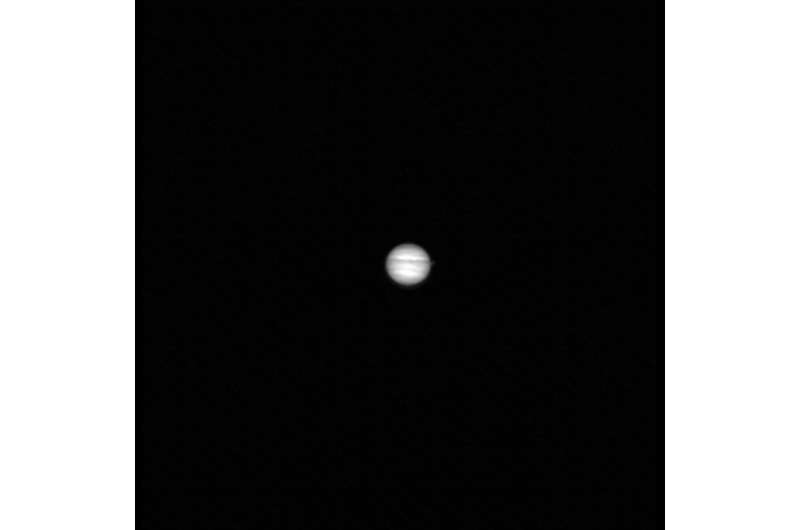"It may not be the highest resolution ever, but its ours."
Denevi explained on the LRO website that the exercise to take a picture of Jupiter was a labor of love. The team does these complicated maneuvers because they love exploring the planets and taking pictures.
"It is fun to take a look around our Solar System every once in a while from our perch in lunar orbit," Denevi said.
As the LRO is 12 years old, a few things don't work like they used to. The Inertial Measurement Unit (IMU)—which keeps tabs on where LRO is pointed—is nearing the end of its operational life. The IMU is now only used in emergencies or special situations. LRO's team now has to use the spacecraft's star tracker cameras to derive an estimate of its location and rotation.
This "adds complications to imaging anywhere but straight down at the lunar surface," Denevi wrote, "we don't want the star trackers pointed at the Moon rather than the stars! The spacecraft is also gracefully aging so the solar panels must be turned away from the Sun for as little time as possible. And then adding in other thermal and timing constraints, the operations team had to work hard to find just the right time to turn the spacecraft toward the outer Solar System and scan across Jupiter to get this image."
Surprisingly, this isn't the first time LROC has taken a picture of Jupiter—they did another shot in 2020. Every once in a while, LRO turns its view outward to take a peek at other places in the Solar System, like Mars and even Earth.
"But just like so many people around the world who like turning their telescopes toward the sky and seeing the stars and planets firsthand, the LROC team could not resist doing the same," Denevi said.
Explore further



